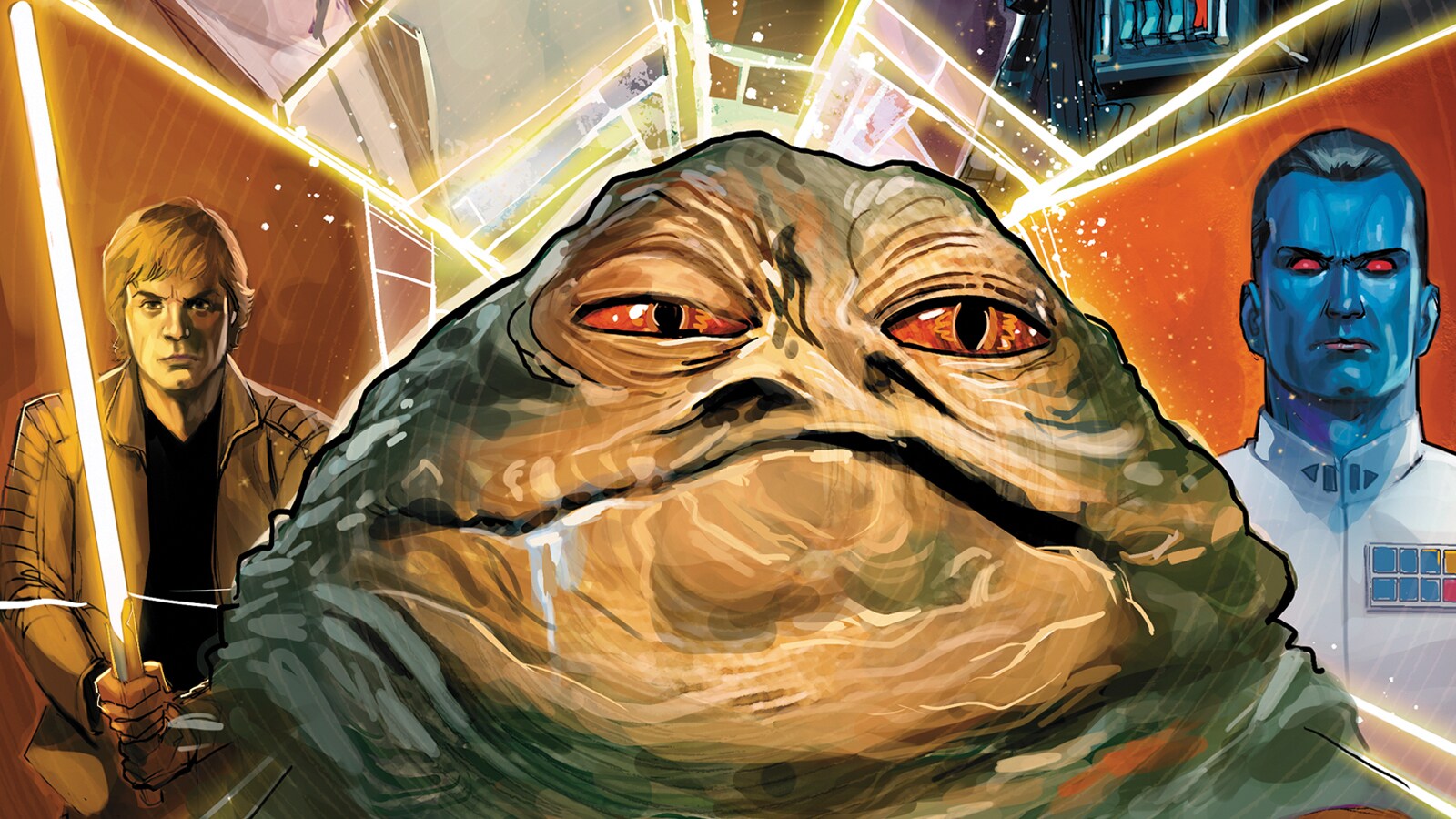Spoiler warning: This story contains details and plot points from Darth Vader: Dark Lord of the Sith Issue #25.
Since 2005, when Charles Soule first sat in a darkened movie theater and watched the newly born Darth Vader lurch off the surgical slab with an agonized cry of mourning, he’s been waiting to discover what happened after the credits rolled on Revenge of the Sith.
More than a decade later, his comic book series Marvel’s Darth Vader: Dark Lord of the Sith picked up at this pinnacle moment and invited fans on a visceral exploration of Anakin Skywalker’s transition beneath the mask. We’ve watched as he grew accustomed to his mechanized suit, sometimes being forced to rebuild himself from droid parts in the heat of battle. The story brought us closer to understanding Vader’s motivations and the Emperor’s power over his apprentice. His turn to the dark side has been punctuated by moments of light, an ambiguous action that can at once be read as Vader protecting his own interests or protecting the future, and levity.
Today, with the final issue in the series on store shelves, we finish this journey at Darth Vader’s side in the most intimate exploration of his inner self yet. Or as Soule described it in his initial pitch for the final issue: “Very trippy, very dark, and intense and strange.”
With a storyline that feels like an in inverse of the Mortis arc from The Clone Wars, where Anakin Skywalker was faced with a vision of his dark future, the final issue in the series invites us into Vader’s meditative mindscape on Mustafar as he travels among the ghosts of his past, a deeply moving journey woven with familiar images and dialogue clipped right from the Star Wars films and other stories. Vader confronts the looming shadow of his present form as it casts a pall over his childhood. Ultimately, he finds a twisted and evil version of Padmé and makes one last attempt to save her before accepting his fate, a pale vision of a single Jedi warrior seen just on the horizon. “He goes from no to yes in the series,” Soule says, literally bookending the first panel of the first issue and the last panel of the final issue with these simple words that denote a complete shift in the character’s thinking. “What he realizes in 25, and it was a very pointed choice to not show possibilities, everything he’s seen is stuff that’s already happened… What’s the point of doing anything other than this? This is all there is for me.
“The big thing that he realizes, the thing that he says 'yes' to is that he’s trapped. That he knows that there’s no other path for him, he sees where his path is leading: that vision on the last couple pages…this figure with a blue lightsaber waiting down the road for him.”
All things are possible through the Force. And through Soule’s storytelling and the exquisite illustrations by pencil artist Giuseppe Camuncoli, inks and finishes by Cam Smith and Dainele Orlandini, and colors from David Curiel, Dono Sánchez-Almara and Erick Arciniega, the series has managed to shed new light on the more intimate emotional side of an iconic villain and broken man. “I hope that what the series conveyed is that complexity,” Soule says. “You see a person of many, many layers even though he’s just a guy in a suit at this point.”
Duty and destiny
Soule alone has had a hand in expanding the backstories of several important legacy characters through Marvel comics series: Lando Calrissian, Obi-Wan Kenobi, and Poe Dameron, just to name a few. But when he first got the call to pen the five-issue Star Wars: Lando series, Soule couldn’t believe his luck. “You know, I was an A New Hope kid,” Soule says, with fond memories of rewatching the original trilogy on LaserDisc and inventing new stories for his action figure collection alongside his siblings. “So as an adult, as a writer who I guess had finally worked my way up to the point where Marvel asked me to write a Star Wars book and Lucasfilm agreed to let me do it, was just shocking.”
With Lando, Soule introduced the tragic friendship of Lando and Lobot. “I just wanted to try to say something about Lando that felt correct to me, that would maybe adjust the way people think about him a little bit, deepen him a little bit, and even take a side character like Lobot who was really pretty disposable in The Empire Strikes Back but also very striking.”
In Star Wars: Obi-Wan & Anakin, Soule dabbled in his first story on the man who would become Darth Vader, focusing on the troubled teenage years of Obi-Wan’s young apprentice. The story, set between The Phantom Menace and Attack of the Clones, gave Soule the foundation for beginning to understand the character’s struggles with authority, duty, commitment, and destiny. “It was an opportunity to think about what a 13- or 14-year-old Anakin would be like, when he’s a teenager, when he’s questioning authority. Realizing that a decision that he made when he was nine is going to steer the course of his life… I mean, a space wizard came in with a laser sword and said, ‘Hey, let’s go!’ Any nine-year-old kid would go,” Soule says. “And I don’t think he understood what it meant to become a Jedi at that time. He certainly did later.”























